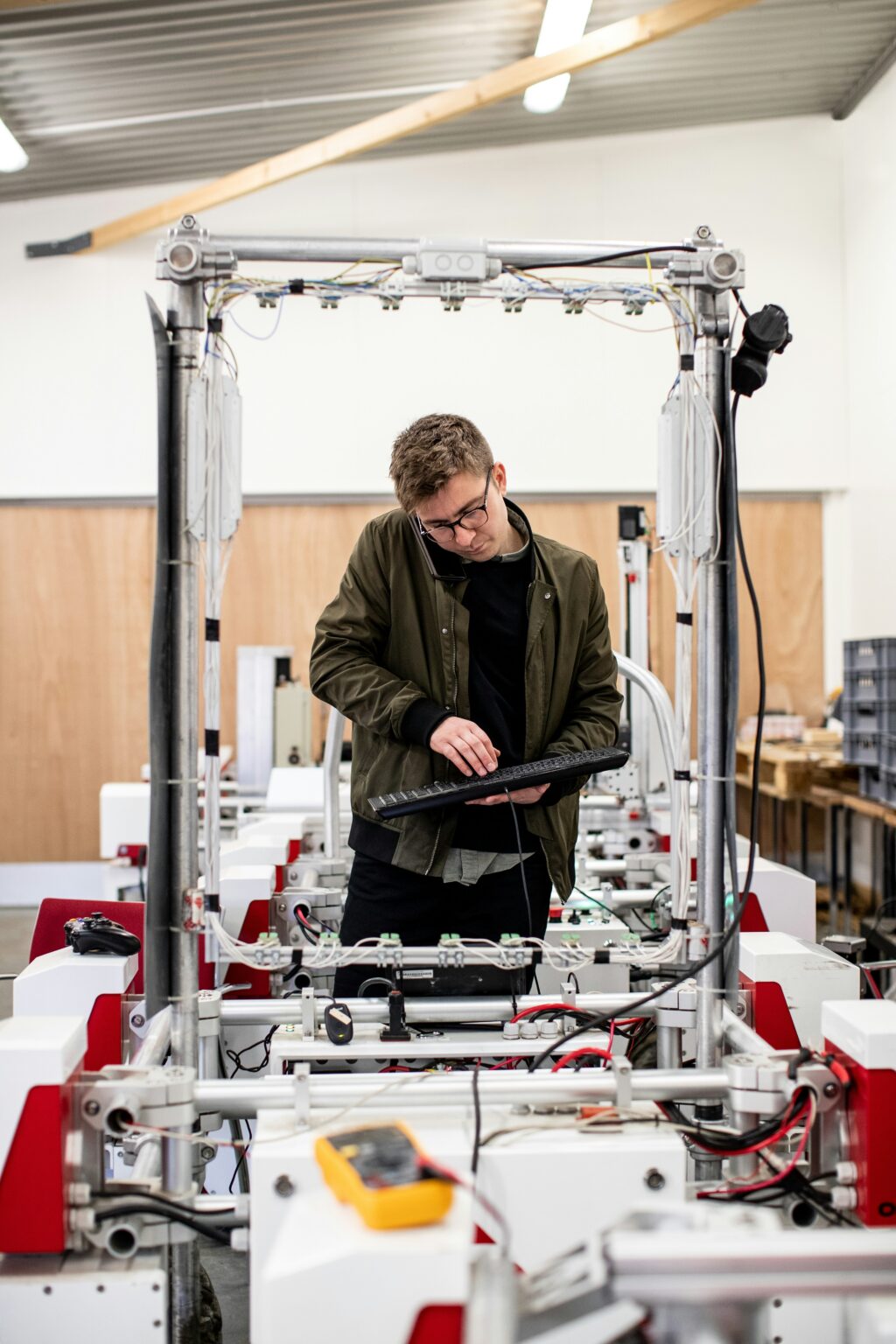There are more technologies than ever before that are designed to help businesses. These apps can range from helping you keep track of customer email to to automating entire processes.
And while automation can feel like the solution to every business problem, a savvy entrepreneur knows which areas best benefit from humans, and which ones can be automated. Here are some of the ways that automation can make a big impact, in all the good ways, on your business.
IMAGE: UNSPLASH
How Can Manufacturing Improve Efficiency Without Cutting Corners?
The days of manual assembly lines dominating manufacturing are long gone. Today, businesses are using automated control systems to streamline production, reduce errors, and optimize efficiency. These systems take over repetitive, time-sensitive processes, ensuring consistency while cutting down on labor-intensive work.
Automation in manufacturing doesn’t just mean robots replacing human workers—it’s about integrating smart systems that monitor production in real time. From quality control to inventory management, automated solutions can find issues before they become more costly problems. The result?
Fewer delays, lower production costs, and a workforce that can focus on innovation instead of routine assembly tasks.
A Better Way To Handle Accounts Payable
Few things slow down a business quite like the endless cycle of processing invoices, tracking payments, and chasing approvals. Managing accounts payable manually is not only time-consuming but also prone to human error. That’s why so many businesses are turning to automated solutions.
Many companies find that AP automation pricing makes this tool more affordable than they first realized to streamline financial operations.
With automation, invoices are captured, processed, and approved without stacks of paperwork or hours of manual data entry. Payments are scheduled on time, reducing the risk of late fees and improving cash flow.
Best of all, digital tracking ensures complete visibility, making it easy to audit expenses and prevent fraud.
Businesses that automate their accounts payable process free up finance teams to focus on strategy rather than getting bogged down in day-to-day transactions. Instead of chasing missing invoices or fixing mistakes, employees can use their expertise to optimize budgets and financial planning.
The right automation tools ensure accuracy, security, and efficiency—all while eliminating tedious manual work.
Customer Service Can Be Automated Without Losing The Human Touch
Providing excellent customer service doesn’t mean answering the same questions over and over again. Many inquiries—like tracking orders, resetting passwords, or checking store hours—can be handled automatically without involving a live agent.
AI-powered chatbots and self-service portals make it easy for customers to find answers without waiting on hold. These tools don’t replace human support but instead handle routine questions so that employees can focus on solving more complex customer concerns. The result?
Faster response times and more efficient service without adding extra staff.
Automation also helps businesses gather valuable customer data. By analyzing common inquiries, companies can identify trends, improve their offerings, and enhance customer experience. When done right, automated customer service solutions reduce frustration and free up employees to handle more personalized interactions.
Marketing Can Run Itself While Still Feeling Personal
Keeping up with marketing is a full-time job—unless you automate it. From email campaigns to better social media scheduling, businesses can automate much of their marketing without sacrificing personalization.
Email automation allows companies to send timely follow-ups, personalized offers, and promotional messages without having to manually hit send each time. Meanwhile, scheduling tools make it possible to plan social media posts in advance, which ensures consistent engagement without requiring daily oversight.
Advanced analytics also help businesses target the right audience at the right time. Instead of relying on guesswork, automation tools analyze customer behavior and optimize marketing efforts accordingly. With less time spent on repetitive tasks, marketing teams can focus on creativity, strategy, and brand storytelling.
Hiring And Onboarding
Finding the right employees is a challenge, and bringing them up to speed takes time. Automating parts of the hiring and onboarding process ensures that businesses can recruit, train, and retain talent without unnecessary delays.
Applicant tracking systems streamline recruitment by sorting resumes, identifying top candidates, and scheduling interviews. Once new hires are on board, automated onboarding systems walk them through training materials, HR paperwork, and company policies—all without requiring managers to oversee every step.
By automating the more repetitive parts of hiring and training, businesses create a smoother transition for new employees while freeing up HR teams to focus on culture, engagement, and employee development.
Businesses that are ready to automate should do so strategically. Whether it’s incorporating a new chatbot on their website or incorporating automated accounts payable, there are many different options. The key is choosing solutions that align best with business goals and values.
IMAGE: UNSPLASH
If you are interested in even more business-related articles and information from us here at Bit Rebels, then we have a lot to choose from.


COMMENTS